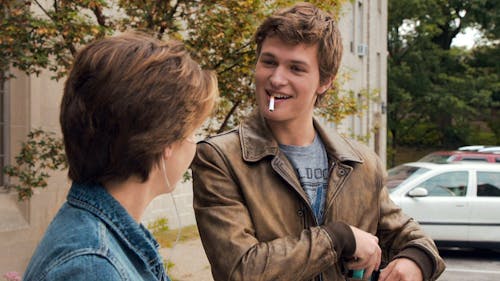Inside 2014: Cultural effect of 'The Fault in Our Stars' movie

The year 2014 was filled with pop cultural phenomena. From Ellen Page’s inspiring coming out story to the iconic elevator fight between Solange and Jay-Z, it was a year that most can remember as being filled with hilarious memes and memories.
One of the biggest aspects of the year was the movie adaptation of John Green’s young-adult (YA) novel, “The Fault in Our Stars.” You may remember this romantic novel about two cancer survivors as the book everyone was reading and the movie tweens were begging their parents to see.
I asked my Circassian cousin what her favorite movie was. “The only English movie I’ve ever seen is ‘The Fault in Our Stars’,” she instantly typed back.
What is it about this movie that has caused such a stir in youth culture on a global scale? Is it the relatability of two young lovers? The way Ansel Elgort and Shailene Woodley brought the characters of Augustus and Hazel to life? Is it Green’s writing in general?
One of the undeniable contributions to the hype surrounding this movie is Tumblr. During 2014, the site was at its peak, and this was one of the first times that social media was used to promote and discuss a major blockbuster. GIFs, hashtags, quotes and memes of the movie flooded Tumblr dashboards and seemed to be the only thing in people’s minds.
Unlike movie series like “The Twilight Saga” and “The Hunger Games,” this movie adaptation was not a franchise and consisted of just one novel and a corresponding movie. The fact that a lone movie was able to resonate so much with an entire generation broke the previous mold created by these franchises and others.
Random internet users that weren’t being paid to do so advertised the movie at no cost to the movie’s budget. Nowadays, movies aren’t deemed “good” unless they get the seal of approval by Twitter users, similar to the effect that Tumblr had in the past. Whenever a hit movie comes out today, a burst of likes or dislikes is immediately shared in a few tweets, and is immediately retweeted hundreds of thousands of times.
Mainstream Twitter’s approval is now seen as a huge advertising and monetary advantage. It’s rumored that Netflix tried to use this untapped potential to its advantage, by generating inauthentic memes for the Netflix movie “Birdbox.”
Green himself has a lasting legacy, starting with a huge following on Tumblr. He used his platform to interact with lovers of the movie and novel, which is now a common practice for popular authors during the latter parts of this decade. Almost all renowned authors have some sort of a following on social media platforms.
Furthermore, Green’s presence on YouTube is still alive today. Green and his brother started the channel VlogBrothers and then CrashCourse, which consists of videos that get thousands of views. Green appears regularly in these videos, teaching kids about the Constitution of the United States.
The soundtrack of the movie was also a vital component to many individuals’ coming-of-age. It propelled some lovers of the movie into obsessive indie and alternative rock phases that a lot of people (myself included) never really grew out of. I still listen to “All I Want” by Kodaline regularly.
The YA romance also created a whole genre of movies and novels that involved terminally ill patients falling in love. The whole romanticization of terminal illness began with how well the movie did at the Box Office. The novel-turned-movie titled “Five Feet Apart,” attests to this idea.
More than anything, “The Fault in Our Stars” informed a whole generation of middle and high-schoolers on how to love in such a mixed up world. Those cheesy movie lines and cheap merchandise sparked an undeniable change in our culture.



